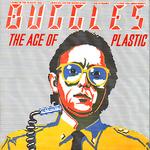Video (Hasn't Quite) Killed the OG Network Star
Tuesday morning at ad:tech Chicago, big brands like YouTube and Yahoo debated the likelihood that the Holy Grail, sought after by everyone from Indiana Jones to Tom Hanks, is (and perhaps always has been) in the unlikely hands of advertisers.
With every new medium comes a wave of schizophrenic behavior in which old media titans express fear, reproach and occasionally cavil at a "threat" that has seen no equal in history.
The movie industry did this with the arrival of VHS, and we do it today with online video - not without merit. Around a narrow corner lives the thinly-veiled concern that we might be kissing our cash cow, network TV, good-bye (and good luck), in favor of a mutable and virtually immeasurable entity: the internet.
But the internet is measurable. Word on the street is that YouTube alone already uses 10 percent of internet bandwidth. Yeah. Streaming amateur video is now so big, it makes the internet seem like a finite series of tubes.
But what's swirling around video madness?
Shashi Seth of YouTube maintains that, far from an unwieldy Goliathan vacuum, the video site maintains the wee concerns of any company. In fact, the biggest challenge YouTube faces is in maintaining the user experience.
And fickle audiences aren't the only "users" to consider; ever-more-self-conscious content and ad partners must also find harmony in the YouTube mix.
There's a running sense that video testing remains a market too young to measure. Where ad implementation in particular is concerned, there's no viable way to look back on history and say, "This works for certain," because the medium simply isn't old enough.
For this reason, ethical concerns come with encouraging clients to spend millions in waters too murky to gauge their depth.
Rebecca Paoletti of Yahoo notes that her company's SmartAds are extremely behavioral, bearing testament to that, while the internet expands like our universe, at least internet behavior can be quantified.
SmartAds can gauge where users come from, how they interact with a site, and what they last bought - all of which trigger what ads get delivered. In terms of implementing a video-based ad model to utilize this data, however, it's not exactly a walk in the park.
To counter, Patrick Moorhead of Avenue A | Razorfish insists a certain company out of Europe, with which they're working, already has live production-ready dynamic platforms to serve on the 'net and TV. :30 spots can be carved up, tagged and reassembled based on cookie and other behavioral data, including search criteria. It's all out there.
Nobody contests the idea that it isn't.
There are allegedly three "Holy Grail components" to our utopian enigma: off-network pieces, contextual targeting (and associated metrics), including search; and video (immersive and emotional media, particularly via television).
Yeah, video gets its own category.
Interestingly, Paoletti veers away from the damn-near alchemic hype surrounding video. It's her view that we need to be where the user is - and frankly, the user isn't always on the 'net.
That's why off-network is an undervalued component of the Holy Grail trinity.
Humanity hasn't yet crossed over into a 24/7 virtual megaverse. And until we learn to address the future without disregarding the past, our elusive Holy Grail will remain lodged in cavernous history, fast - and foolishly - overlooked in the wake of tomorrow's hype.



Comments
Actually, it would be "cavil" at, not "cavalier".
Great article, though - it's these kind of insights and reportage that keep me coming back to adrants
I doff my hat to you, man
Contextual targeting means...exactly?
Contextual targeting is the process of building ads or sponsored sources around related content.
If you're reading an article, you might notice there are banners or text links alongside it that are related to what you're reading. Or the article might have highlighted terms that refer you to a helpful sponsor.
That's only one component, but in a lot of ways it's the most straightforward.